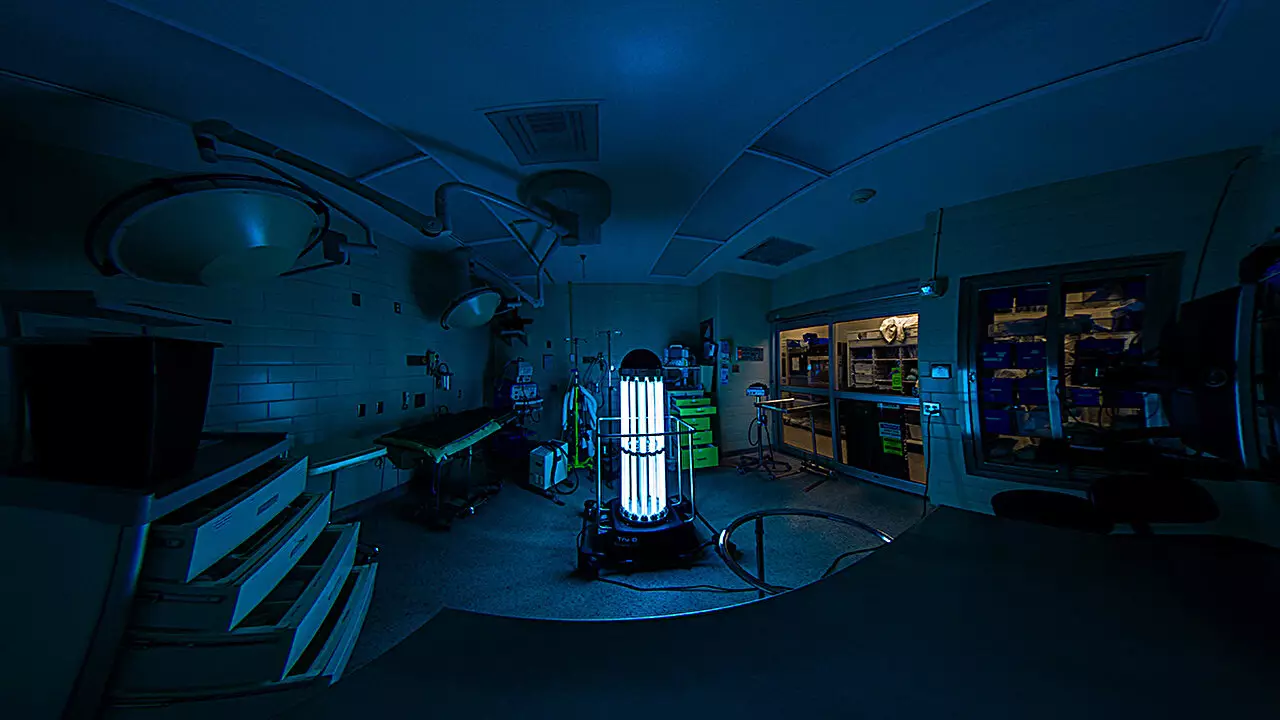Robots have become so integrated into our daily lives that millions of Americans now own various robotic devices. From cleaning robots to robotic lawn mowers, these machines are becoming increasingly common. However, the use of robots in hospitals takes on a different purpose. Hospital robots, like the one recently acquired by the Texas A&M Veterinary Medical Teaching Hospital (VMTH), are designed to enhance cleanliness and prevent the spread of disease. With its advanced technology, this stationary robot named Tru-D or “Trudy” is a game-changer in the field of hospital sanitation.
Trudy is not your average Roomba that simply vacuums your home. It is equipped with 28 bulbs and eight ultraviolet C (UVC) centers, making it capable of eliminating even the most resilient infection-causing bacteria that can linger on various surfaces such as walls, floors, and tables. These bacteria, including those responsible for staph infections, can survive for months in the environment, even after traditional cleaning methods have been employed. Pam Douglas, the infection control coordinator at the VMTH, highlights the significance of sanitation in hospitals where patients are vulnerable to infections that can easily spread to other animals and humans.
The Need for Enhanced Sanitation
Katy Wendler, the assistant hospital administrator, emphasizes the tremendous effort required for manual sanitation in hospitals. During a manual cleaning of an operating room, for example, everything is taken out, and the entire base of the room, including the walls and ceiling, is thoroughly cleaned. Each piece of equipment is then cleaned before being placed back in the room. Although manual cleaning effectively controls the spread of germs and viruses, it consumes a considerable amount of time and energy. With Trudy’s presence, hospital staff can allocate their time to other responsibilities, such as patient care. Trudy also enables random cleanings of rooms, even when they have not been recently used.
Trudy may be stationary, but its appearance is reminiscent of a robot from science fiction. Standing tall and cylindrical in shape, it is equipped with UVC lights that run vertically on either side. Once placed in a room, Trudy’s 360-degree sensors determine the size of the space and the duration required for the disinfection cycle. Smaller rooms generally require a 15-20 minute cycle, while larger rooms may take 30-40 minutes. While UVC disinfection robots are common in human hospitals, their use in veterinary hospitals is relatively rare. The VMTH has taken full advantage of Trudy’s capabilities, utilizing it over 800 times since acquiring it earlier this year. It is used in operating rooms, exam rooms, isolation rooms, and the ICU of both the large animal and small animal teaching hospitals.
User-Friendly Technology
Despite its advanced technology, Trudy is surprisingly user-friendly. Training is provided to ensure that anyone can operate the robot effectively. According to Pam Douglas, numerous individuals within the hospital, beyond the infection prevention department, have been trained to run Trudy. All the controls are conveniently accessible via an iPad, making it easy to navigate and operate.
The Highest Standards of Infection Control
Together, Trudy and the VMTH are committed to upholding the highest standards of infection control. While traditional cleaning methods are still employed, Trudy’s presence serves as an enhancement to the hospital’s overall sanitation efforts. Douglas emphasizes that Trudy benefits not only the patients, but also the staff, faculty, and the wider community. With the help of this cutting-edge disinfection robot, the VMTH is paving the way for a new era of hospital sanitation.


Leave a Reply